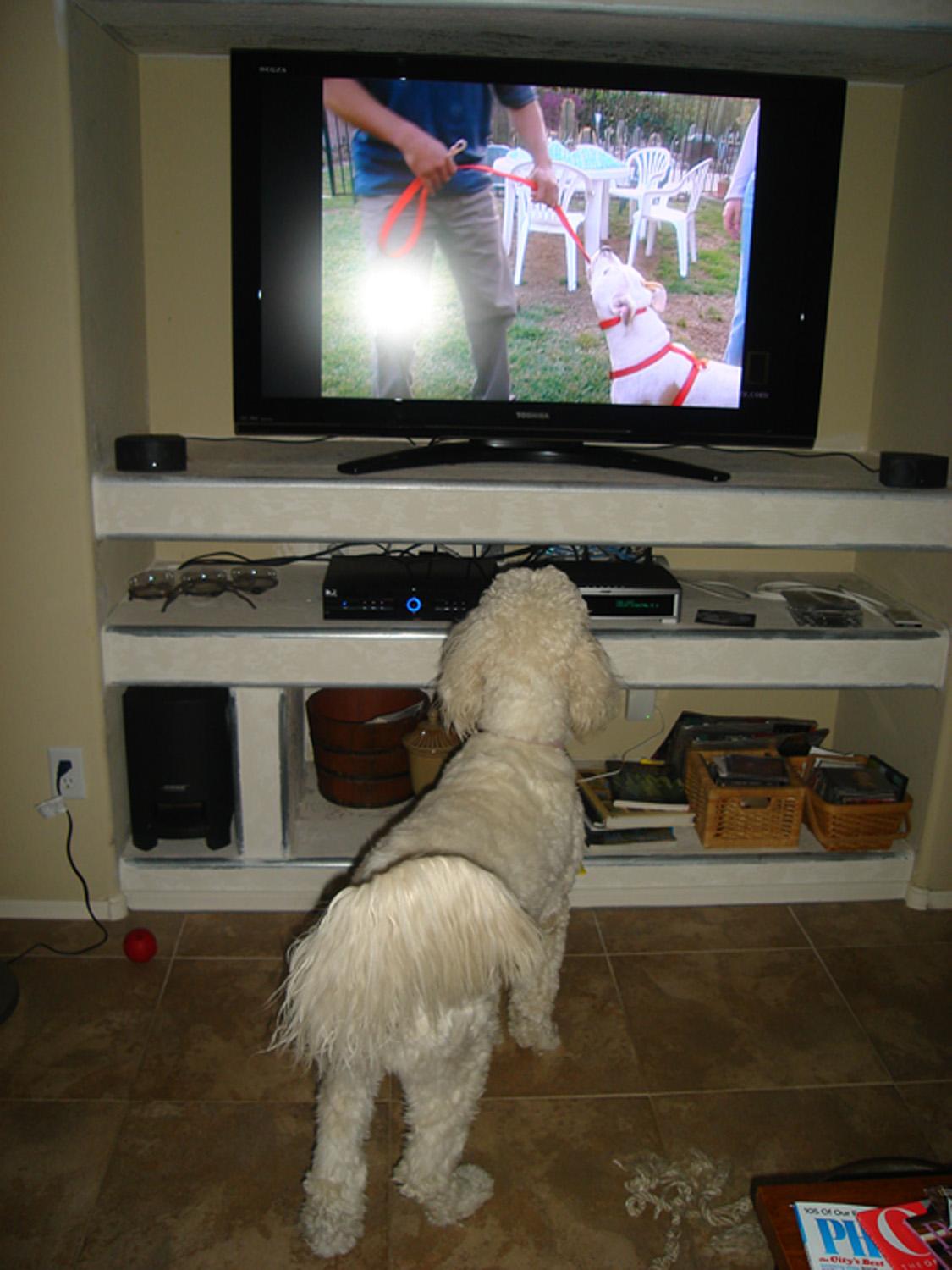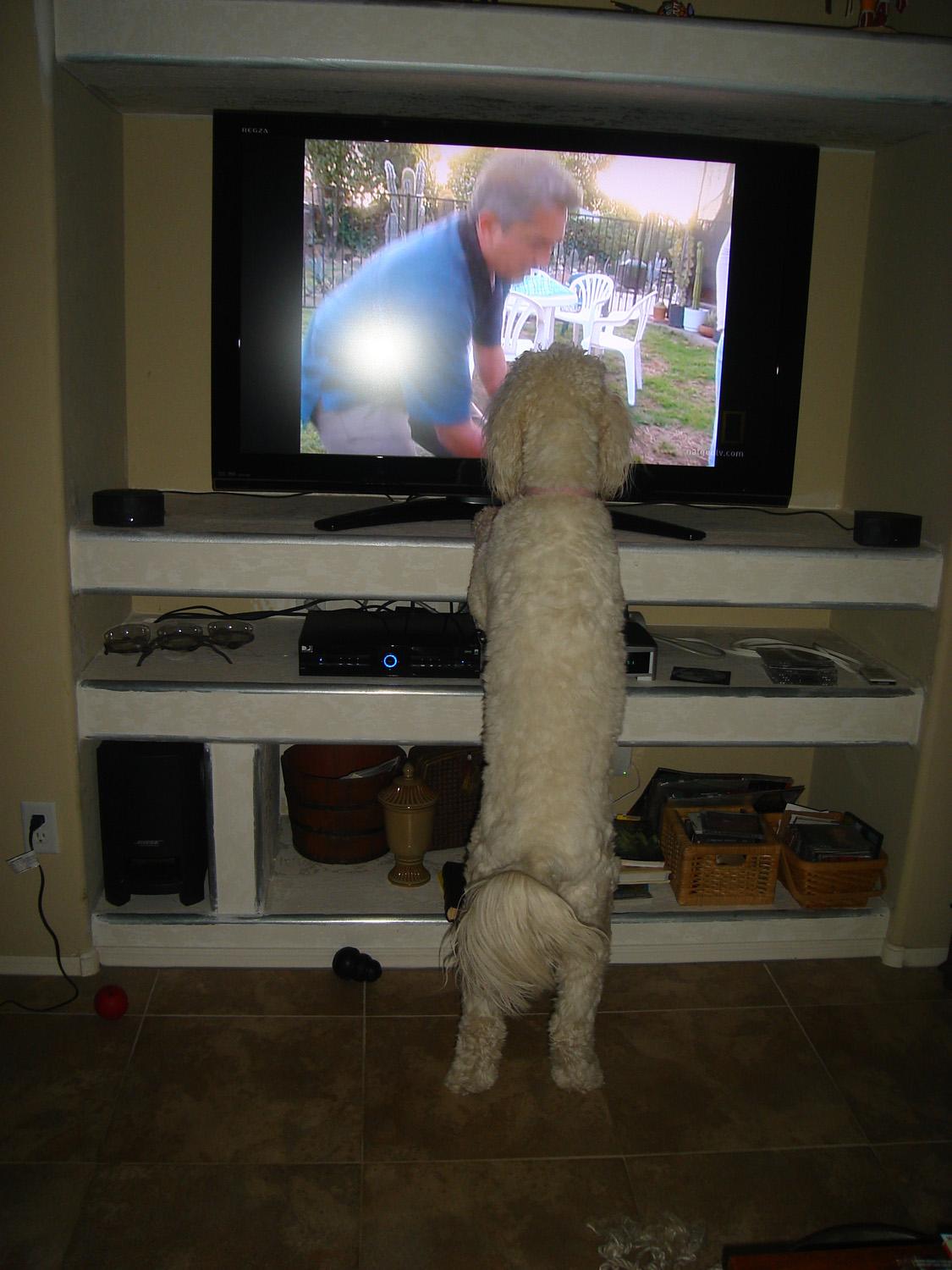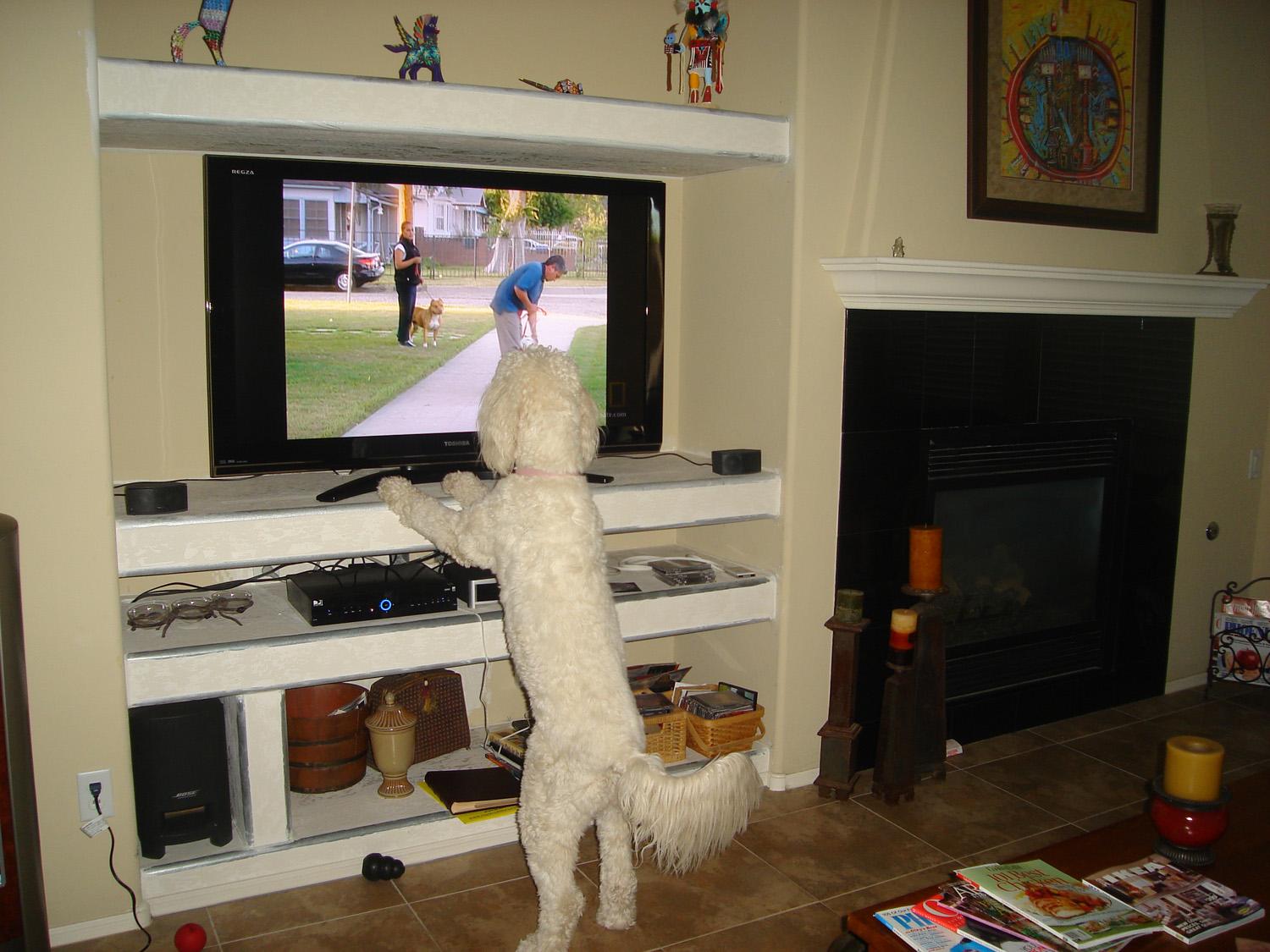Archives for Dog Psychology category
Posted on Dec 04, 2009
Adopt a Shelter Dog, Behavioral Modification, Dog Psychology, Dog Training, Rehoming a Dog
What is the best way to introduce a new dog to the family?
I often hear of dogs who are being re-homed after being with their new family for only a few days. I understand the tension that can exist when you find that your beloved Prince doesn’t like the play mate you hand-picked for him. You were certain that getting another dog was the answer to helping him calm down.
If it were only that easy! All dogs are not created equal (in their minds)…they may want nothing to do with each other and yet separate them and they are wonderful, friendly beings. So, maybe getting a new dog wasn’t the best idea you’ve had, but re-homing too quickly may not be either.
The new dog should be in the home for a few weeks learning and earning their place. With you as the leader, take the introductions slowly. In our enthusiasm, we bring the dog in, introduce it to the other dog and go about our lives expecting (hoping) they will figure it out. Some do and some don’t. They are the ones who end up seeing their face on a “free to good home” ad. Taking the time to let the dog fit in more naturally may save everyone!
If you are bringing a new dog into your home and want to get off on the right track, please send a note in the My Question box to the right, and I will be happy to assist you! (I share the box with Melody)
Posted on Dec 02, 2009
Behavioral Modification, Dog Psychology, Dog Training
It’s a busy time for a lot of people…people who just got a puppy and perhaps forgot how much work it can be! You may be thinking they are puppies, so no big deal. You can train them later.
Have you heard the phrase, “we show people how to treat us?” I would like to include dogs in that! You are training your dog how to be in the home (and elsewhere) whether you think you are or not. The moment you bring them in and for years to come, they will be learning from you.
Please don’t misinterpret this to think I believe we should try to make dogs into good little humans. That will never be – Thank Dog! However, since they are so good at being dogs, we need to use “dog training” in how to adapt to life in a human family. This is always done out of respect for who they are and their inherent behaviors.
Having said that, if your friends have excuses for why they can’t come in or you panic when there is a knock at the door, or during meals, or any other time, you have “trained” your dog. Think of training them as providing consistent, repetitive guidance on what’s good behavior in the home and in relationship to their surroundings.
We have all walked into someone’s home and it was obvious that it was the dog’s home and he was kind enough to let the humans stay. That’s not the fault of the dog. I don’t necessarily think it’s healthy for the dog or humans either!
As dogs mature and go through their hormone shifts, they will have new responses and can be affectionately referred to as teenagers. This is when consistency on your part is so important. A consistent, positive, persistent approach will do a lot more than a raised voice and frustration.
So, as you go about your day, remember that you are training your dog…the question is how?
Posted on Nov 24, 2009
Dog Psychology, Dog Smile, Dogs and Sarcasm, Energy and Dogs
Most people get it by now that dogs pick up on our energy. We pick up on theirs as well, but most humans prefer to act like they don’t get it! Why is that?
I was wondering if dogs understand when we are being sarcastic? I think they do. Why? Because we have an energy about us that is usually playful and play is something they understand.
A few examples:
- Zoe has taught herself to open the slider door. That’s not necessarily a bad thing except she doesn’t know or doesn’t care to know how to close it behind her. I usually look up with a smile and say, “close the door, you’re letting the flies out.” I swear she will turn around, look at me with her ears up and tail wagging as she gives me a big smile. Please don’t act like you’ve never seen a dog smile.
- Mac doesn’t run, he frolicks! However, he typically saves this spontaneous happy walk for when he has something in his mouth that isn’t his. I say sarcastically, “good boy!” He brings whatever it is to me and proudly hands it over! Seriously.
If I can be a little sarcastic with them, it helps me to take things in stride, and I do think they get it. They get my energy and intent about what I’m saying. For me, it’s entertainment. For them, they’re just words that make me smile and they like that.
Posted on Nov 20, 2009
Behavioral Modification, Dog Humor, Dog Psychology
Friday at last! After another week of being the watchful eye and keeping the household safe, Moby can relax. . .

Posted on Nov 19, 2009
Behavioral Modification, Dog Psychology, Dog Training, Dogs and Cognitive Learning
Do dogs want to please us? Do they reason? We tend to think they must want to please us because of their enjoyment of our affection. We have all witnessed behavior that would indicate dogs have the ability to reason. The ongoing research regarding canine cognition is sure to reveal scientifically what we can only assume based on what we see. However, there needs to be care taken not to assume dogs think, reason, learn, or respond as humans do. We are setting someone up for failure to think otherwise.
As I work with dogs and their humans on a daily basis, I see frustration in the human’s eyes and confusion in the dog’s as the human is certain their dog knows exactly what is being asked and they are just being stubborn. Can they be stubborn? Absolutely. They can also be confused, and our escalating impatience will not help to clarify our expectations.
An example: dogs are taught to sit with the human facing them. Soon, they are sitting every time we ask. Then, we take the leash and are out for a walk and as we stop we ask our beloved dog to sit and demonstrate their new skill. Not only do they not sit, they act clueless. What happened? We moved. Dogs are constantly in tune with our bodies. They learned sit with us facing them and they think that is part of the command.
Rather than getting frustrated, make sure they understand what “sit” means and that it has nothing to do with the proximity or position of your body or a treat. Once they really know the word and the associated response, they will sit regardless of where you are standing in relationship to them. When certain they understand the command and they are either distracted or stubborn, ask them to sit once and then assist them in sitting. They must follow through!
There is more to say on this topic, and that will be covered in another post. Until then, if you have any questions regarding the training of your canine companion, please send a note in the box to the right. (I share with Melody)
Posted on Nov 14, 2009
Behavioral Modification, Dog Psychology, Dog Training
Some dogs have a very strong prey drive. You don’t take or “train” that out of them; rather you work with it. It can be especially challenging when working on their recall or teaching them to come when called. Be patient, consistent with training, and follow through with the command as they mature. You will gain their respect and pleasing you will become more important than whatever the prey may be.
The dog in the photo below has a strong prey drive whether or not the animal has blood flow. He downed a bear and though extremely exhausted, came when called, dragging the bear to his bed where he fell asleep.

Posted on Nov 10, 2009
Behavioral Modification, Dog Humor, Dog Psychology, Dog Training
Lola, a beautiful Goldendoodle belonging to a friend of mine living in Arizona, has been trained by Cesar Millan! While I would like to receive a little credit for her obedient behavior, I have to admit the credit goes to Cesar, the Dog Whisperer (as if I needed to add his title).
The amazing aspect of her training is that she never met Cesar! I wouldn’t have believed it if I hadn’t seen it for myself. The photos below tell the story and show that she is smarter than your average Goldendoodle! Here is she is being “personally” trained by Cesar Millan.

I like to carry my leash but this dog looks like he is trying to play tug-of-war with Cesar. Even I know that’s not a good idea!

Forget that loser dog, Cesar – look at me! I’m Lola! I luff you!

You say it, Cesar, and I’ll do it! I’m a good girl!
Posted on Nov 04, 2009
Aggression, Behavioral Modification, Dog Park, Dog Psychology, Dog Training, Palm Springs Dog Park
When at a dog park, it’s not the dogs I am concerned about! It’s their humans. Dogs are excellent at being dogs. Take them to a dog park without them responding to you, and you will really get to witness dogs in action. They aren’t being bad by being a dog – they are doing what they know to do until we teach them to be what we call a “good dog.” Dog parks are filled with more scents and pent-up energy than we can imagine.
I was working with an aggressive dog outside of the dog park. I was a safe distance from the entry room with the dog nicely in a sit-stay. A car drives up, opens their door, and lets three dogs run out off leash. My guess is the dogs are not well-trained so trying to keep them on a leash to enter the park would have been a challenge.
All three dogs ran toward us. I said nicely, “we are in training and the dog is aggressive toward dogs.” May I remind dog park lovers that it’s not always a good situation to have dogs off leash charging toward dogs who are leashed without knowing about the dogs. That’s why before entering the park, the dogs have an area for leash removal. There is absolutely no way of knowing every dog in every situation – especially, if someone is telling you they have a dog-aggressive dog. A nice, friendly dog doesn’t make a dog-aggressive dog change it’s ways!
The man still could not get control of his dogs but kept assuring me that, “that one is friendly.” Which one is “that one” and what about my saying several times this dog is aggressive didn’t he understand. Fortunately, nothing happened. He was swatting at the dog calling it bad, and if I had a spare leash, it would not have been put on the dog!
I write this as a reminder to everyone to be responsible with your dogs. Have them on a leash if they are not trained to be off leash. I know the dog park is the highlight of the day for some dogs, but that will soon change if there is an altercation that could have easily been prevented.
Posted on Oct 30, 2009
Barking, Behavioral Modification, Dog Psychology, Dog Training
Again, I say dogs bark. That’s what they will forever do. Some feel the need to express vocally more than others, and can be worked with to reduce their anxiousness through proper behavior modification.
Lassie was known for actually “saying” something with a bark; i.e., “Timmy is in the well.” “The barn is on fire.” His people knew when he barked, it meant something. Most of us wish that were the case with all dogs. The bark does mean something to the dog, but may be lost in translation. Like Lassie, dogs may bark as an alert to let you know someone is at the door or as a request to let you know they need to go outside.
While some dogs get this, others may need to be trained to let us know. I have found that while my dogs are not reserved when it comes to barking for warning, they are tongue-tied when their water bowl is empty. All random barking ceases as they sit quietly by the empty bowl waiting for me to look their way.
While we tend to think of barking as a dog’s form of communication, they may be relying on mental telepathy!
If you need assistance with an excessive, anxious barker, please contact me for guidance.
Posted on Oct 28, 2009
Dog Psychology, Dog Training, Palm Springs Dog Training, Socialization
I receive a lot of calls regarding dogs who are uncontrollable (their human’s words) on a leash when out in public. If the dog sees a bicycle or another dog, they pull and “go crazy!” One of my first questions is have they done basic obedience with their dog?
They sound a little skeptical, as they respond hesitantly, “We took him through the puppy class at PetSmart and he knows how to sit and lie down and that stuff.” I say, “Good, we can work with that.” Puppy classes are a great foundation for teaching your dog to listen and respond to you. It doesn’t matter if your dog was trained in the basics years ago, they will never forget it. It’s the human that forgets how to use these tools in every day life with their dog.
For starters, remind yourself and your dog of what you both know. And, that is they know how to respond to you when asked. You may need to work a little harder on the leash training and teaching your dog to walk in a relaxed state by your side. Once they do, when faced with a distraction of any kind, they are more likely to respond when asked to “sit and stay” or whatever is expected of them at the moment.
If you are having issues with your dog out in public and you have been through basic obedience, think of how to put that to use when outside on a leash. I’m sure you didn’t initially put the time into the training only to have a dog who doesn’t listen when it was really necessary.
If I can provide additional tips or you are need of specific guidance, please send a note in the box to the right.













